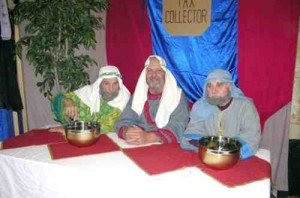Review by Ed Quillen
Colorado – December 2008 – Colorado Central Magazine
Colorado 1870-2000 II – Historical photography by William Henry Jackson Contemporary rephotography by John Fielder
Text by Gillian Klucas
Published in 2005 by Westcliffe Publishers in conjunction with the Colorado Historical Society
ISBN 978-1-56579-566-2
THIS IS A SEQUEL to what is likely the best-selling Colorado book of all time, Colorado 1870-2000, which came out a few years earlier. The story starts with William Henry Jackson (1843-1942), a Vermont painter of landscapes who headed west after the Civil War and took up photography for a clientèle that included government exploring expeditions and railroads, eager to publicize the attractions along their lines.
Jackson did much of his work in Colorado, and it was strenuous work with glass-plate negatives that had to be developed in darkness — sometimes in a special railroad car, but often a mule-carried tent. He left thousands of images, many now in possession of the Colorado Historical Society.
John Fielder is a modern landscape photographer. He uses a heavy view camera, often toted by his llama. And in conjunction with the historical society, in 1997 he set out to rephotograph some of Jackson’s work. He ended up with more than he could fit in the first volume; thus this sequel.
Reviewing a photo book can be difficult, at least for a word guy like me, even though I have some experience as a photographer. If it’s a collection of new work, I can ponder the composition and lighting. But here, the modern photographer is trying to duplicate the composition and lighting of a photographer a century earlier.
That’s not easy. While I was scouting historic railroad pictures of this area in the summer of 2007, I ran across one of the railroad barrel dump just east of Salida taken in the 1950s when it was still operating. I bought the rights to use it, and set out to rephotograph the site for “then and now” pictures in this magazine. I ended up clambering up an embankment and then through a barbed-wire fence as the wind howled, comparing what I saw through the viewfinder to the old image. It was 45 minutes of miserable work, and the digital camera I carried weighed just a few ounces. I got close to matching the earlier scene, but I was there in a different season at a different time of day with a lens of a different focal length and “film” of a different exposure speed, so it certainly wasn’t a perfect match.
William Henry Jackson didn’t do much work, if any, on the High Plains of Colorado, so you don’t see that in this collection. We see some of Denver and other Front Range Piedmont cities, and our part of the world gets more attention than it did in the first collection. Salida, for instance, had two small images on one page in the first book, and this time around, it gets a full two-page spread. Leadville, then and now, is displayed on several pages, with observations that it’s gritty and retains its mining-town character.
We also see pictures of Mt. Massive, little changed, and Mosquito Pass — the road looked in better shape then than now. Buena Vista and Twin Lakes are also pictured; Buena Vista seems to have changed more than any of our other towns.
The pictures extend far beyond Central Colorado, of course, from Mesa Verde and the San Juans up into northwestern Colorado, and they’re all fun to look at.
The text is rather didactic, bemoaning much modern development and pleading for better land-use regulations in Colorado. While I may agree in part, I think the book would have been better if the text had just stuck to historical comparisons and let readers draw their own conclusions about changes in Colorado.
Some places look pretty much the same as they did a century or so ago. Others that bustled then are lonely now, and the reverse is true of others. We see vegetation change over time (generally there are more trees now than there were then), and observe that reservoirs have drowned some wonderful spots.
I didn’t see many errors, though there were some. For example, it mentions the construction of “Glenwood Canyon Dam” on the Colorado River in 1963, when it was in fact “Glen Canyon Dam.” It says the Denver & Rio Grande Western Railroad abandoned the Durango-Silverton line in 1969 and that it was rebuilt in 1980, when in fact the railroad kept operating the Silverton train until selling the line in 1980.
All in all, though, this is a delightful book to leaf through and examine closely, showing us how Colorado has changed, for better and worse.

